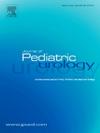电疗法治疗小儿非神经性盆底功能障碍:系统综述。
IF 1.9
3区 医学
Q2 PEDIATRICS
引用次数: 0
摘要
导言:“儿童盆底功能障碍,如遗尿、膀胱功能障碍和膀胱功能障碍,对儿童及其家庭都有重大影响。传统的治疗方法包括行为疗法、药理学方法和物理疗法。近年来,使用电疗,特别是经皮电神经刺激(TENS),已成为治疗泌尿和粪便功能障碍的一种有前途的非侵入性选择,在减轻膀胱过度活动、遗尿和便秘症状方面显示出有效性。本系统综述的目的是确定电疗在治疗无神经系统疾病的儿童盆底功能障碍中的任何应用和低、中、高频发射频率分类的疗效。分析了最常用的参数化,以及它对减少大便和尿失禁的影响,以及它作为传统治疗(如行为治疗和药理学)的替代或补充的用途。材料和方法:本系统综述遵循PRISMA指南。使用PubMed、PEDro和Cochrane数据库进行文献检索,重点关注近10年发表的临床试验。纳入标准针对的是非神经性盆底功能障碍的儿科患者。涉及针灸或数据不完整的研究被排除,PEDro评分低于5分的文章也被排除。结果:11项研究符合纳入标准,涉及495名3-18岁的儿童受试者。研究主要探讨了TENS、经皮TENS (PTENS)和干扰电流刺激(IFS)。每周进行2-3次,持续3个月,频率范围从10到55赫兹。电极主要放置在骶骨外侧(S2-S3)。在实验组中观察到显著的改善,包括减少失禁,增加膀胱容量和提高生活质量,尽管一项研究报告没有明显的变化。讨论:回顾的研究强调了TENS和相关技术治疗儿童盆底功能障碍的有效性。TENS参数,如10hz频率和骶骨电极放置,显示尿失禁和大便失禁的一致结果。TENS联合生物反馈或泌尿治疗进一步改善了预后。尽管取得了积极成果,但在会议持续时间和频率方面仍然存在差距。需要进一步的研究来完善方案并确认长期效果。结论:TENS、生物反馈和行为疗法,无论是单独治疗还是联合治疗,都是治疗小儿盆底功能障碍的有效、无创治疗方法。这些干预措施提供了一个可行的替代药理学方法,虽然完全解决症状仍然罕见。本文章由计算机程序翻译,如有差异,请以英文原文为准。
Electrotherapy in pediatric patients with non-neurological pelvic floor dysfunctions: A systematic review
Introduction
“Pelvic floor dysfunctions in children, such as enuresis, encopresis, and bladder dysfunction, significantly affect both children and their families. Traditional treatments include behavioral therapies, pharmacological approaches, and physiotherapy. In recent years, the use of electrotherapy, specifically transcutaneous electrical nerve stimulation (TENS), has emerged as a promising non-invasive option for treating urinary and fecal dysfunctions, demonstrating effectiveness in reducing symptoms of overactive bladder, enuresis, and constipation. The aim of this systematic review is to determine the efficacy of electrotherapy in any of its applications and classifications by low, medium or high frequency emission frequency for the treatment of pelvic floor dysfunctions in pediatric patients without neurological pathologies. The most commonly used parameterisation is analysed, as well as its effect on the reduction of faecal and urinary incontinence and its use as an alternative or complement to conventional treatments such as behavioural therapy and pharmacology.
Materials and methods
This systematic review adhered to PRISMA guidelines. A literature search was conducted using PubMed, PEDro, and Cochrane databases, focusing on clinical trials published in the last 10 years. Inclusion criteria targeted pediatric patients with non-neurological pelvic floor dysfunctions. Studies involving acupuncture or incomplete data were excluded and also articles below a score of 5 on the PEDro scale.
Results
Eleven studies met the inclusion criteria, involving 495 pediatric participants aged 3–18 years. The studies primarily explored TENS, percutaneous TENS (PTENS), and interferential current stimulation (IFS). Sessions were conducted 2–3 times per week over 3 months, with frequencies ranging from 10 to 55 Hz. Electrodes were predominantly placed externally over the sacral area (S2–S3). Significant improvements were observed in experimental groups, including reduced incontinence, increased bladder capacity, and enhanced quality of life, though one study reported no significant changes.
Discussion
The reviewed studies highlight the effectiveness of TENS and related techniques for pelvic floor dysfunctions in children. TENS parameters, such as 10 Hz frequency and sacral electrode placement, showed consistent results for urinary and fecal incontinence. Combining TENS with biofeedback or urotherapy further improved outcomes. Despite positive results, disparities remain in session duration and frequency. Further research is needed to refine protocols and confirm long-term effects.
Conclusion
TENS, biofeedback, and behavioral therapies, either independently or combined, are effective, non-invasive treatments for pediatric pelvic floor dysfunctions. These interventions offer a viable alternative to pharmacological methods, though complete symptom resolution remains rare.
求助全文
通过发布文献求助,成功后即可免费获取论文全文。
去求助
来源期刊

Journal of Pediatric Urology
PEDIATRICS-UROLOGY & NEPHROLOGY
CiteScore
3.70
自引率
15.00%
发文量
330
审稿时长
4-8 weeks
期刊介绍:
The Journal of Pediatric Urology publishes submitted research and clinical articles relating to Pediatric Urology which have been accepted after adequate peer review.
It publishes regular articles that have been submitted after invitation, that cover the curriculum of Pediatric Urology, and enable trainee surgeons to attain theoretical competence of the sub-specialty.
It publishes regular reviews of pediatric urological articles appearing in other journals.
It publishes invited review articles by recognised experts on modern or controversial aspects of the sub-specialty.
It enables any affiliated society to advertise society events or information in the journal without charge and will publish abstracts of papers to be read at society meetings.
 求助内容:
求助内容: 应助结果提醒方式:
应助结果提醒方式:


